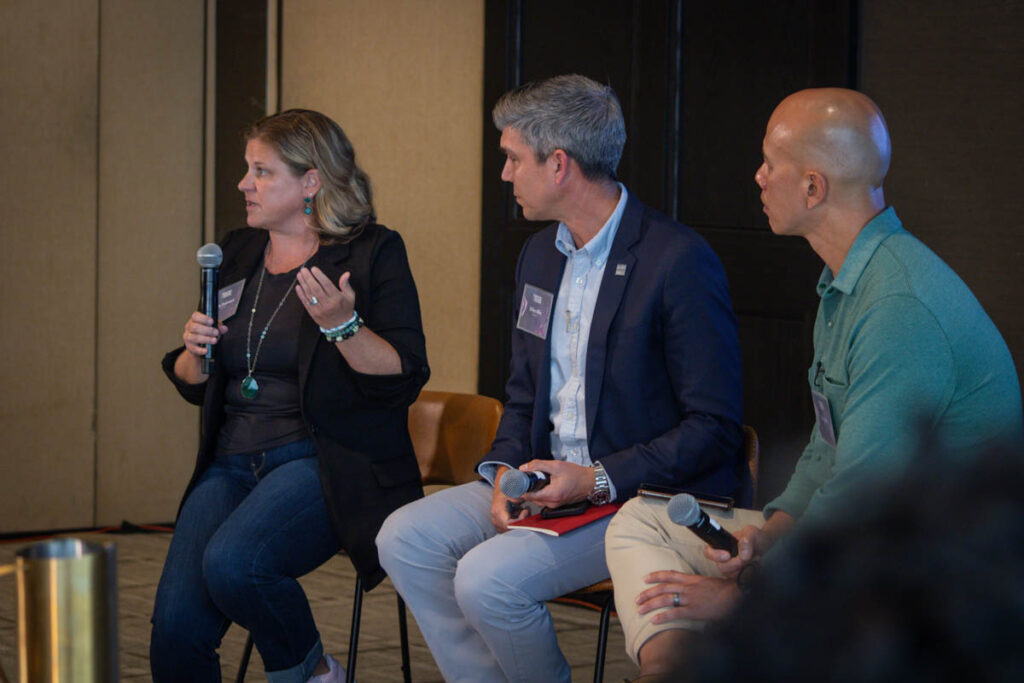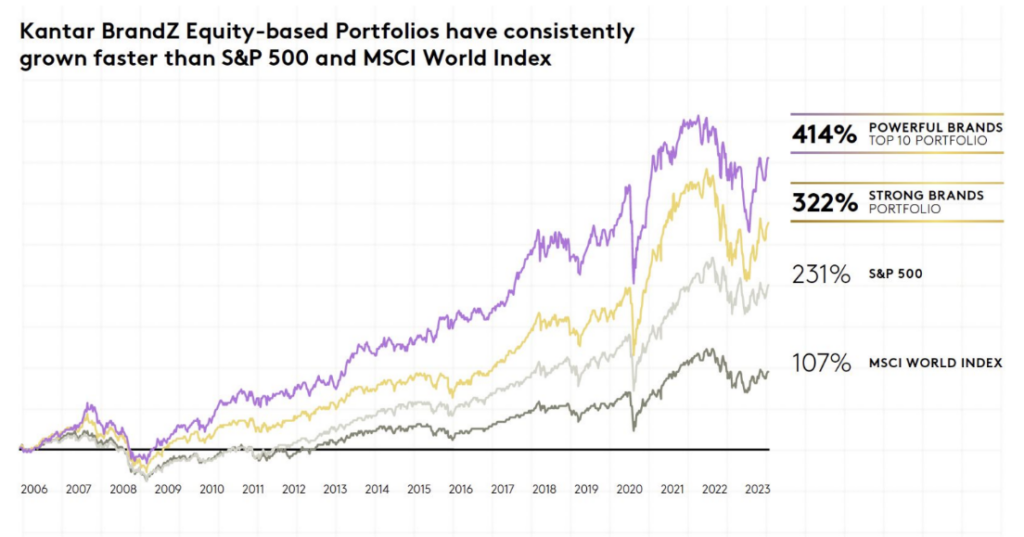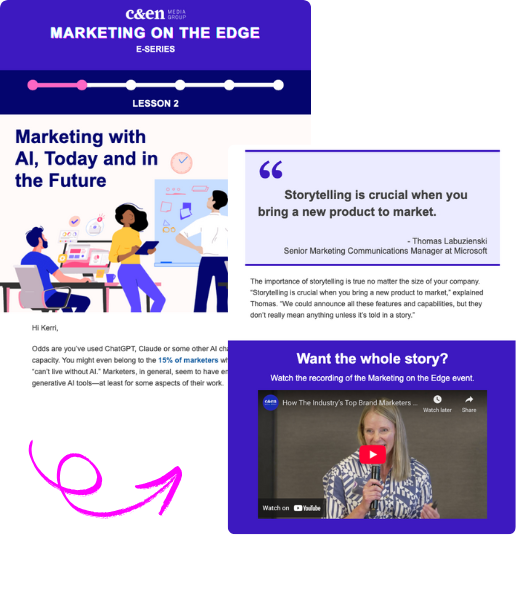Brand equity — the perception your stakeholders have of your brand’s value, credibility and promise — is critical to overall brand health. However, while arguably one of the most important metrics to track, brand equity studies take time. How can you track brand health in the meantime?
We sat down with three of the industry’s leading brand experts — Peter Jap of ACS, Kate Stabrawa of Horseshoe Communications and HDMZ’s Dillon Allie — to discuss the brand metrics that matter most, and how to interpret these indicators to drive strategic action.
Before You Track Anything, Understand Your Brand’s Purpose
A clear purpose is the cornerstone of both your brand and your metrics.
“The first thing any brand needs to define is what you stand for, what you’re trying to do and what problem you’re trying to solve,” said Dillon Allie, president and chief executive officer at HDMZ.
Whether you’re launching a new product or entering a new category, aligning your measurement to your purpose is essential. As Allie noted, many life science brands are “creating a solution to a problem that many people don’t even know exists.” In those cases, education is just as critical as differentiation.
Staying true to your brand promise is critical, especially during new product launches and expansions. “During my work at a biotech testing company, we pivoted to move into oncology and organ health,” said Kate Stabrawa, president and founder of Horseshoe Communications. “Though the brand did need to evolve with the business strategy, we stayed focused on delivering information to help people make decisions for their families, which was a critical brand promise we had.”
Takeaways for Marketers:
- Define your North Star: What does your brand exist to solve?
- Use that brand purpose to prioritize metrics
- Ensure brand purpose is upheld during major product launches or market shifts
Brand Metric No. 1: Employee Alignment
The strongest brands are built from within. Employees, when aligned with your mission and values, can become the most authentic, trusted advocates and an extension of your brand story.
“Employees are more willing than ever to talk about what they do every day and where they work,” Stabrawa noted.
Stabrawa recounted how during her time at a large healthcare/kidney dialysis company, the organization turned internal culture into brand equity.

A brand on the outside is only as strong as the brand on the inside.”
– Dillon Allie, HDMZ
“What’s really valuable about creating affinity and humanizing every single person at the organization — aligning them with messages — is that it creates consistency,” she said. “They can go out in the world and share the same messages about the brand on Instagram, on TikTok, or wherever they are. And of course, we were caregivers. That one-on-one experience with patients was how we humanized the brand.”
Providing employees with branding tools can also drive action. Equip them with toolkits, tone guides and storytelling frameworks to ensure they accurately represent the brand.
Employee KPIs to Monitor:
- Internal brand and mission alignment surveys
- Glassdoor reviews and employee referral volume
- Participation in brand initiatives
- Volume and tone of employee-generated content on social media
- Volume and quality of incoming applications
Brand Metric No. 2: Content Engagement and Sharing
Content engagement tracking offers real-time insight into how your brand resonates with its audience. “Sharing is the bar,” explained Peter Jap, senior brand manager at ACS. If someone shares your content, it means they feel a personal alignment with it — a powerful signal in today’s skeptical environment.
High-signal engagements like shares, saves and thoughtful comments only happen when audiences feel a meaningful connection to the brand. That’s why authenticity isn’t optional; it’s a prerequisite to building trust and reach on social media.

Stabrawa shared how her team brought empathy and authenticity into the brand’s voice by having operational discipline on social media.
“There were times when our social media manager would respond to individuals on social and sign her initials at the end of the message,” Stabrawa explained. “She always did this for posts that we knew mattered, like a parent talking about getting their genetic results or someone saying, ‘For the first time, I know that I’m cancer-free because of their test.’ Those were the things we needed to humanize.”
Allie offered a practical way to amplify this kind of engagement: Have employees and leaders share authentic stories. “People follow people more than they follow brands,” he said. Encouraging your team to have a voice online can unlock more transparent and trustworthy connections with your audience. These interactions help bridge the gap between institutional voice and individual trust.
Content KPIs to Monitor:
- Shares, saves and comments (over impressions and reach)
- User-generated content
- Sentiment analysis of social responses
- Employee thought leadership and engagement on social media
Brand Metric No. 3: Risk and Crisis Readiness
The strongest brands are also the most prepared.

Inconsistency creates distrust — especially during crises.”
– Kate Stabrawa, Horseshoe Communications
Having a crisis plan in place and ready to activate can protect your reputation and build long-term credibility. “Science has been weaponized and politicized,” Allie cautioned. “You may think your company isn’t in the crosshairs, but you’d be surprised how quickly you could get pulled in.”
One practical way to approach this is to audit your reputational risk quarterly. Check if your organization owns the competitive keywords it should. Review past media coverage for tone and balance. “Have your top five crisis scenarios ready, with reactive statements approved in advance,” Stabrawa recommended.
And remember: You don’t have to respond to everything — but you should be ready.
Risk Management KPIs to Monitor:
- Crisis readiness and simulation participation from internal employees
- Media tone, share of voice and social sentiment during high-risk periods
- Time to respond during emerging issues
Brand Metric No. 4: Brand Equity
Even with short-term KPI tracking in place, science marketers still need to communicate brand value to leadership. Annual brand sentiment and equity tracking is the gold-standard for doing so, despite the longer time horizon needed.
“Brand equity trackers work, but they take years,” Jap noted. “The key is to stay consistent with messaging. That compounding effect matters more than spikes of activity.”
Allie also suggested using third-party data and benchmarking studies — like Kantar’s BrandZ index — to show how strong brands outperform on financial metrics as a way to translate brand data into business terms. “The Kantar BrandZ chart showing strong brand portfolios outperforming the S&P 500 gets the C-suite’s attention every time,” he said.

Brand Equity KPIs to Monitor:
- Brand equity measures, such as trust, preference and likelihood to recommend
- Share of voice compared to competitors
- Quality and tone of earned media coverage
Brand Measurement Looks Different for Everyone
Ultimately, strong brands don’t emerge from polished messaging or high-volume campaigns alone. They grow from a clear purpose, as well as being shared internally and externally, reinforced by human connections and strengthened by strategic measurement. With the right metrics in place to monitor these elements, you’ll build a brand that lasts.



















